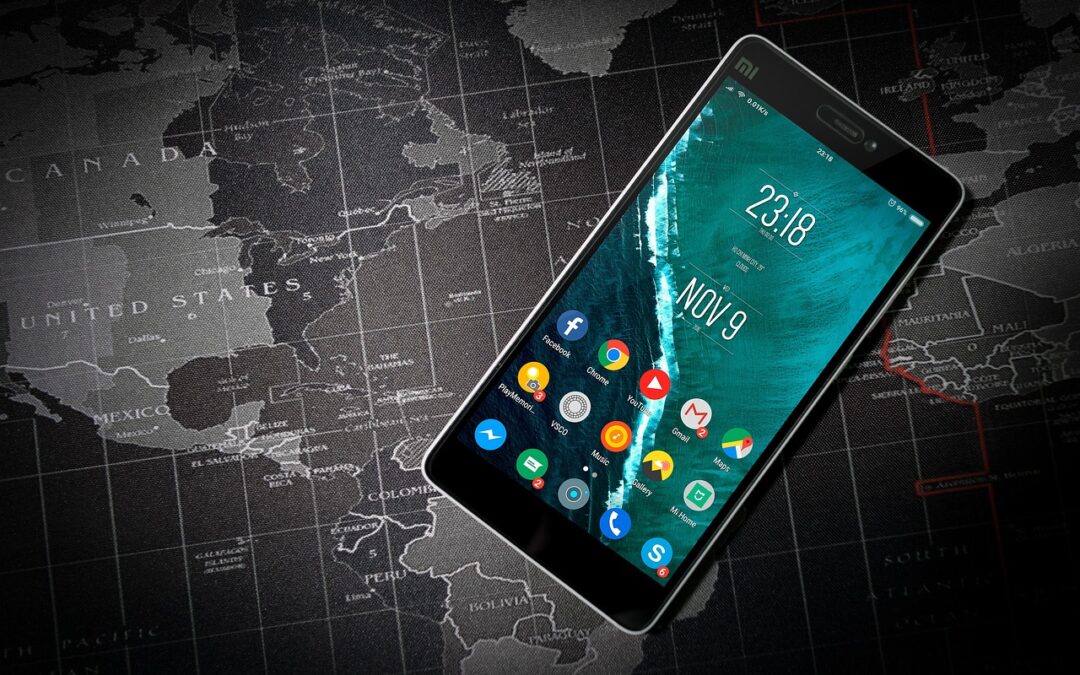In terms of smartphone upswings and downswings, 2023 was a rollercoaster ride. While the first half of the year was marred by a significant downturn in trade, by the time 2023 drew to a close, industry players were spurred on by strong signals of a market rebound.
The past year saw more foldable handsets than ever before, with curved screens proliferating the mid-high bands. In addition, bendable and rollable concepts from Motorola also proved popular.
In this article, we provide an overview of smartphone trends and features tipped to feature prominently in 2024 and beyond.
1. AI-Powered Cameras
Offering potential for perfect shots every time, AI-powered cameras are tipped to surge in popularity though 2024, enabling users to capture professional-quality images effortlessly. Smartphone camera technology has come a long way in recent years, with this latest innovation making amateur photographers look like seasoned professionals by automatically adjusting settings to ensure the perfect shot every time.
2. Mobile Security
More and more businesses are furnishing their employees with mobile technology, fuelling a new generation of digital nomads and enabling colleagues to stay connected while on the move. As a result, mobile security has come to the fore, and businesses are coming under pressure to ensure that their systems, transactions, and user information are secure. In particular, businesses that rely on mobile payments need to reassure consumers that payment apps are safe. Forward-looking companies seeking to go mobile are making security a top priority to allay their customers’ fears about mobile transactions.
3. 5G Connectivity
Rapidly establishing itself as the new standard in smartphone technology, 5G is hailed as one of the most significant breakthroughs in the mobile industry to date. Industry insiders anticipate that 2024 will see wide deployment of 5G, facilitating drastically improved network reliability and lightning-fast data transfer speeds. 5G is poised to transform the way people all over the world use their smartphones by providing low-latency gaming, seamless streaming, and enhanced augmented reality experiences.
4. Refurbished Phones
Consumers around the world are feeling pinched due to high inflation and cost of living hikes. Accordingly, bargain seekers are seeking out used and refurbished smartphones rather than buying new. Within the United States, refurbished phone uptake is also on the up, thanks to a new generation of environmentally conscious, value savvy consumers. Valued at $8.08 billion in 2021, the U.S. refurbished and used mobile phone market is tipped to reach $23.61 billion by 2030. This market allows consumers to access high spec handsets at reduced prices while receiving assurance that their purchase has been tested, repaired, and warrantied.
5. Mobile AI
As artificial intelligence (AI) digital assistants like Alexa, Siri, Cortana, and Google Assistant play an increasing role in people’s lives, regular mobile apps are also leveraging the power of AI—particularly voice recognition and natural language processing—to enhance the user experience and allow for greater hands-free use. Mobile apps are also using AI’s voice recognition capabilities to bridge translation gaps, provide transcriptions of audio content, and more. While benefiting the user, these features also allow app developers and marketers to learn more about their customers.
6. Location-Based Services
It is no secret that many mobile apps gather information about their users, including their location. In fact, many consumers are actively giving their apps permission to track their real-world movements. Every time an app is installed and loaded, the user receives a notification requesting permission to access their location. Indeed, with certain apps, such as ride-hailing services like Uber and Lyft, it is impossible to use the app without sharing your location. Nevertheless, other apps are taking location-based services in a new direction, with companies requesting the user’s physical location even when this is irrelevant to the services they offer. This information, nonetheless, remains incredibly valuable to businesses. It enables them to improve their marketing efforts by targeting users more effectively with location-relevant content. For example, marketers can use geofencing to trigger a push notification or ad on a user’s phone when they enter or leave a predefined area.
7. Foldable Screens
Phones with folding screens aren’t new—Android models with this flashy feature have been available since 2019. However, foldables have by now officially entered the mainstream, and experts are anticipating a wave of new options in 2024 beyond the established tablet and clamshell models of years past. For example, Samsung demoed a prototype tri-fold smartphone at the Mobile World Congress (MWC) 2023, and Huawei is moving in a similar direction. The latter brand is thought to be on the verge of releasing a new breed of tri-fold models in the first quarter of 2024. In addition, Samsung also showcased a new sliding display model at MWC 2023. The handset for this prototype incorporated bezels that expand and contract to enable different display sizes on a single screen. Both Vivo and Transsion are reportedly working on similar rollable screen technology, with a market-ready device predicted before 2024 draws to a close.

